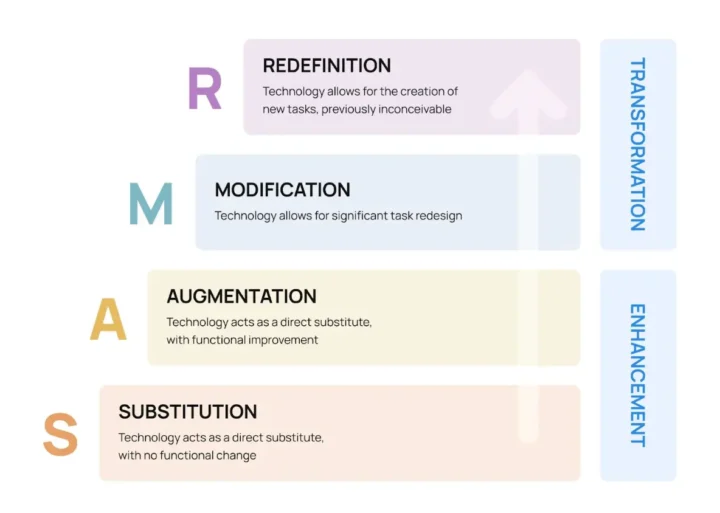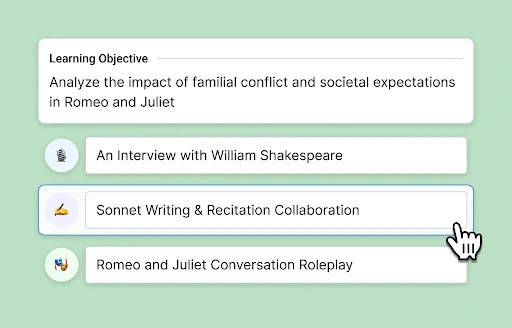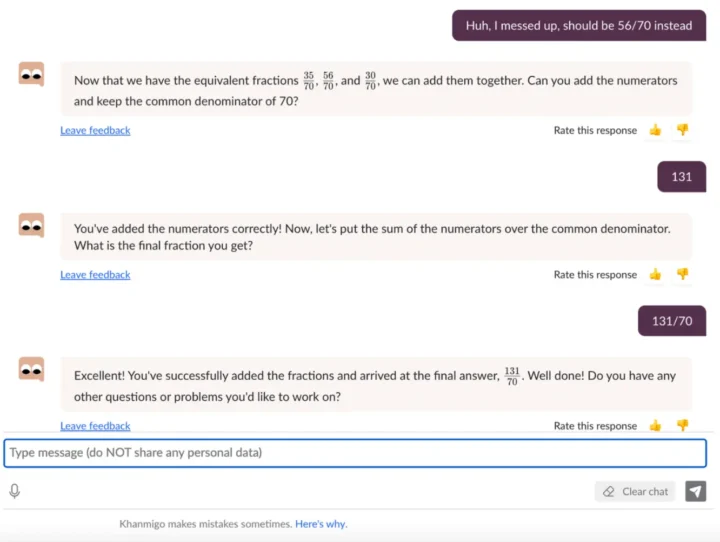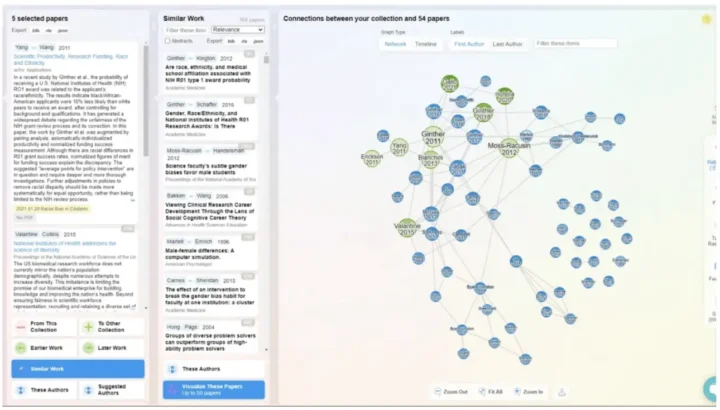
At UX Studio, we’re excited about the potential of AI to personalize learning and empower educators. However, we’re also keenly aware of the need for responsible implementation to ensure equitable access for all.
In this blog post, we’ll provide an overview of the latest trends, challenges, and most popular AI tools in education. We’ll explore how AI can be used to personalize learning, identify potential downsides, and discuss the critical role of UX design in shaping a future where AI bridges the educational divide, not widens it.

A rushed shift toward digital education
The pandemic has turned the usually well-ordered systems of education upside-down. Many institutions were forced to go virtual practically overnight. From one day to the next face-to-face group interactions were replaced by communicating with little squares over Zoom. It was a steep learning curve for both educators and learners and the adoption of digital learning remains challenging with a digital divide becoming apparent.
Now, AI tools are getting smarter and more sophisticated, offering personalized learning experiences and support for educators. With this exciting mix of factors, AI has the potential to revolutionize education, but it’s important to explore both the possibilities and the challenges that come with it.
The promise of AI in the education sector
One of the biggest promises of AI in education is its potential to benefit everyone involved, from students and teachers to schools themselves. Imagine AI streamlining tedious and repetitive administrative tasks like grading and scheduling, freeing up valuable time for educators to focus on what matters most: supporting and mentoring their students, and in academia, it gives them more time for in-depth research.
For learners, AI promises to provide a personalized learning experience. Just to mention a few aspects of this, AI can adapt in real-time to the students’ understanding and progress of various subjects, and it can tailor its content to match the person’s learning needs, providing videos, text-based resources, and interactive, creative tasks. And when I say student, that encompasses the learners in formal education and school systems. It also includes those learning in an informal setting, such as learning a language, a new hobby, or being more immersed in a topic because of one’s intrinsic motivation.
Enhancement or transformation?
While digitization has been around for long, the emergence of large language models stirred up the education space. When looking for AI power tools for education, an interesting aspect to take into account is how profoundly the tool altered the teaching and learning experience. To evaluate this in a systematic manner, the SAMR model is a helpful framework for educators to assess technology integration. It outlines four levels: substitution (replacing traditional materials with digital versions), augmentation (enhancing lessons with interactive elements), modification (redesigning learning activities with technology), and redefinition (creating entirely new learning experiences). Understanding the SAMR model allows us to see how AI tools can be used most effectively to move beyond simple digital replacements and truly transform learning.

While the first two levels provide enhancement, the third and the fourth level suggests transformation: rethinking, redesigning, and innovating learning.
The lowest level, substitution could mean that teachers replaced traditional paper-based worksheets with digital ones or ask an AI chatbot to write a handout on a certain topic. We go a level further and we can take an AI powered quiz tool, that gamifies quizzes, and raises them to another level with additional value such as engagement, better group cohesion compared to a traditional individual paper quiz.
If we go to the transformation space, at the modification level we have AI tools that introduce new tasks and capabilities that were not possible before. Imagine simulations for complex scientific concepts, or dynamic assessment of students’ strengths and weaknesses so that teachers could create personalized learning experiences.
At the highest level, redefinition, AI-based education tools offer immersive learning experiences. Examples include virtual field trips, VR language learning, or exploring anatomy with the aid of AR.
Although the model dates back to 2010, I find it serves as a really useful framework for evaluating AI tools in education. It helps us to understand the role of the AI tool from the ‘user’s’ perspective (may it be a 16-year-old student, an academic, or a teacher at a language school), and how, or if, it changed their experience with education.
Most prominent application areas of AI in education
Through the lens of the SAMR model, I looked at the areas of education where AI has the most impact and transforms the way people teach and learn. I selected AI-powered tools that go beyond just automating tasks and saving time. I included those that modify or redefine tasks, allowing for completely new ways of sharing and gaining knowledge and skills.
Be an engaging teacher with the help of AI tools
AI is rapidly changing the teacher’s toolkit. Tools like personalized learning platforms can tailor lessons to each student’s needs. AI enables teachers to tailor lessons for each student individually, something they couldn’t do on their own.
AI can also analyze student data to better understand their individual learning styles and progress, then create tailored learning materials with considerations for accessibility and personalization. These tools aim to streamline teachers’ workflows, personalize learning for students, and ultimately improve learning outcomes for all.
Here are some popular tools to keep an eye on if you’d like to use AI in your teaching practice:
- Eduaide.ai & Education Copilot: These AI-powered platforms streamline lesson planning by generating lesson outlines, teaching resources, materials, and assessments, saving teachers valuable time for classroom activities.
- Magicschool.ai: This tool uses AI to support educators in various tasks. These include a lesson plan generator that creates plans based on specific topics and objectives and a multi-step assignment generator that builds activities with warm-ups, key vocabulary, and aligned writing prompts. These tools offer educators valuable time-saving options and support for different learning styles.
- Flint: Going beyond lesson planning, Flint offers a comprehensive suite of features. It provides personalized learning activities (in the demo, you can see a simulation where the tutee has to act as JFK during the Cuban Missile Crisis). Also, it automates administrative tasks, and gives teachers individual and group feedback to improve their teaching practice.

Tools to have better learning experiences and outcomes
Next to platforms having more of their focus catering to educators and teachers, there are a good number of AI-powered tools to support learners in secondary and higher education, as well as in informal learning contexts, like preparing for a job interview or learning some Thai before your holiday. These tools usually support learners in multiple ways, with a focus on enhancing learning outcomes and fostering intrinsic motivation, with AI playing the role of a tutor or learning companion rather than a machine to be tasked with completing assignments instead of the student.
- Querium: An AI-powered learning platform designed to help students in grades 3-12 and college master math skills. Their core product, StepWise, is a virtual math tutor that uses AI to mimic a human teacher and provide personalized instruction. StepWise catches student errors in real-time, preventing confusion and frustration.
- Khanmigo: Khanmigo promises to be learners’ tutor on ‘just about every topic’. It offers personalized tutoring for students, helps teachers design lessons and analyze data, and even assists parents with homework. Khanmigo’s founder, Sal Khan also shared his vision for AI’s potential for bringing forth positive change in the Education space in a TED talk. He sees a future with a personal AI tutor for every student and an AI teaching assistant for every teacher ultimately leading to more parity in education.
- Ivy.ai: This chatbot platform is designed specifically for university and college students. It helps streamline student services by providing 24/7 information and assistance on everything from admissions and enrollment to financial aid and course selection. This frees up staff time and improves the overall student experience. While it is a bit of an odd one out but by alleviating the cognitive load a lot of tasks and administration causes for higher education students, ivy.ai ultimately contributes to better learning outcomes.

Unlock faster academic achievements with AI tools
AI is also making waves in the realm of academic research and writing. These tools empower students and academic researchers by automating tedious tasks and improving research efficiency, for example, scouring through millions of papers to select the relevant ones instead of having different database queries on 25 tabs. If you, like me, have come from academia, you probably shed a tear thinking about how these tools could have sped up the literature review process for your thesis if only they were available when you were writing it. So here are some helpful tools powered by AI that help people navigate the challenges of academic research.
- Elicit: This tool helps researchers discover and synthesize research. It searches for relevant papers, summarizes them, and even helps find hidden gems traditional searches might miss. Researchers can also use Elicit to identify themes across many papers and explore new research areas, which speeds up the process when it comes to systematic reviews and meta-analyses.
- Research Rabbit: This tool claims to be the ‘Spotify for Papers’, with the user being able to create thematic collections followed by recommendations. Not only does it help you to effectively scour through research papers, but with its handy visualizations it helps researchers to map the connections between papers and authors. Research Rabbit makes sure you don’t miss out on new scientific resources with its personalized digests sent to your inbox.
- Consensus: As an AI search engine for research, Consensus can quickly look up concepts and findings from 200 million scientific papers and instantly summarize results for you. This allows researchers to quickly grasp the main points of various studies and focus their efforts on the most relevant sources.

Emerging application areas and use cases for AI in tasks around education
AI is present in many other areas and aspects of education and goes beyond the ones listed above: personalized learning, teacher support, and academic research. We have to mention a few novel and influential areas where AI is already gaining traction. These include grading, where AI-powered tools can free up educators’ time by handling tedious administrative tasks and providing students with more targeted feedback through intelligent assessment. Additionally, AI is making strides in accessibility. Tools like Presentation Translator create real-time subtitles in multiple languages during lessons, ensuring inclusivity for students with diverse language backgrounds. AI can also unlock ways to be more inclusive towards learners with disabilities. For example, AI-powered systems can generate alternative learning materials, such as converting text to speech or creating visual aids catering to students with hearing impairments and other learning needs. These advancements empower educators to create a more inclusive learning environment for all students.
Threats of AI-generated content in education
Following the emergence of large language models like ChatGPT, the first level, substitution seemed to be a way how people used AI in education: many students were quick to recognize AI’s ability to generate essays and write assignments. This approach, however, rightfully raises some concerns, and academic institutions have swiftly taken measures to prevent this misuse of technology.
From students’ and academics’ side plagiarism became an issue and University teaching staff had to be quick on their feet to spot unoriginal content. One major challenge with educational AI assistants is the potential for misinformation. Biased training data or “hallucinations” (AI-generated content that seems plausible but is factually incorrect) can lead students down rabbit holes of false information, especially in sensitive subjects like history. Since AI often doesn’t disclose its sources, or it is known to cite non-existing papers, it can be difficult to identify false information at first glance.
A recent debate has emerged regarding teachers’ ability to detect AI-generated writing. Recently, a report on AI in education interviewing teachers in Hungary confirmed what I’ve been seeing online for some time: teachers express high confidence in identifying AI-written assignments. A new study to be published in June challenges this notion. This randomized controlled trial investigated the ability of both novice and experienced teachers to identify AI-generated text. The concerning results showed that generative AI can now simulate student essays in a way that goes undetected by teachers. This highlights two key issues: firstly, teachers may be overconfident in their ability to discern AI-generated content, and secondly, these AI-written essays sometimes receive higher marks than genuine student work. This raises concerns about potential plagiarism going unnoticed and even being rewarded. To fight this, AI tools to detect AI-generated content emerged, but educators and institutions remain cautious as they have doubts about their accuracy and effectiveness. To avoid false positives, AI-detection tool, Turnitin can miss roughly 15 percent of AI-generated text in a document. These tools could supplement educators’ judgment that remains valuable as they know their students, their writing style, capabilities, and the context in which the text was created.
I believe that AI in education should be about more than just offloading tasks. This article hits the nail on the head with the questions teachers should ask themselves when considering AI: “How can AI empower students with more agency and meaningful choices throughout their learning journey? Can AI generate examples, scaffolds, and other supports to ensure accessibility for all students? Most importantly, how can AI make learning more relevant and engaging?” With AI, personalized learning experiences can be a reality, while a teacher might not have the time and capacity to cater to students’ unique backgrounds, learning styles, and goals.

Challenges and pitfalls of integrating AI in education
Just like in the case of other, generic generative AI tools rightfully raise concerns regarding privacy, safety, bias, plagiarism, and misinformation, the same goes for leveraging this technology in the education space, but with higher stakes. Due to the datasets they are trained on, AI-generated content for teaching and learning can lead to discriminatory outcomes, perpetuating inequalities and negatively impacting students’ learning experiences.
In school settings, breaches of data and privacy violations can have detrimental effects on students’ educational outcomes. The risks of identity theft and discrimination are also present when introducing AI tools at schools without taking the right measures. Many AI tools lack data minimization as they collect and use more data than necessary.
AI also raises ethical concerns like transparency, political bias, environmental impact, and potential discrimination. These issues require careful consideration when integrating AI into formal or informal learning settings. To address these, educators and policymakers, as Center for Teaching Innovation’s article suggests, should prioritize transparency in AI development, ensure responsible data use, and promote diverse and inclusive AI tools that minimize environmental impact.
An answer to challenges: developing AI literacy and competencies
Humans’ expectations and mental models of AI are often far from reality. This was easy to predict as we are humans with complex thought patterns, attitudes, biases, and irrational decision-making. These biases and cognitive distortions serve us, and they help us make sense of the world. But when it comes to interacting with AI, these human biases could result in people not recognizing the opportunities it provides or not being aware of threats. This is true in cases where the fact that we interact with AI, for example through a chat function with a name and human face, is transparent and communicated, which is not always the case.
We as UX designers and researchers can help users in the process of developing mental models of AI to harness the benefits of these education tools while being aware of and also being able to manage the threats and challenges.
As of now, researching human-AI interaction, human attitudes, and mental models toward AI in different spaces is an unexplored area. Alarmingly, scientific research – with meticulously designed studies and tedious publication processes – is way behind the advancement of AI tools in all spaces. Tools, products, and services with AI are put in front of the public without thorough research on human factors. Even without large-scale academic research at hand on human-AI interaction, we have the chance and the responsibility to learn about how people use the tools we are working on as user experience professionals. Our goal is to make users’ thoughts, mental models, needs, and problems be heard for stakeholders. This ensures that we minimize the harm and risks and possibly enhance the good that AI brings to students’ and teachers’ lives.
To sum up, developing AI literacy and critical thinking skills are paramount. Some products took these principles to heart and ensured that the AI in their products doesn’t complete tasks instead of students but acts like a mentor and supports personalized learning. This stands in contrast to the biggest, most popular, and free generative AI tools such as ChatGPT. These guardrails are critical when designing tools to lead to better outcomes in the education space.
Beyond the digital: concerns around ethics, accessibility, and equality
Can state-subsidized primary, secondary, or higher institutions afford to leverage AI tools and technologies? There are refreshing exceptions, but last I checked many schools in Hungary have chalkboards only, and struggle with providing the basic learning supplies – like chalk. It is hard to imagine the institution providing teachers with a paid, AI-powered grading tool. This is an issue in other areas of the world too, highlighting the digital divide that persists even in basic education. Equipping schools with AI tools becomes a secondary concern when fundamental resources like textbooks and internet access remain out of reach for many students. This is not solely a question of user experience but about the whole business model, values, and ethics of education AI tools. So, when working on an AI tool in the education sector, make sure to be inclusive in your research and design process.
Let’s assume that primary and secondary schools provide access to an AI EdTech tool. There are still human factors at play that influence the success rate of adopting a tool – the digital literacy of teachers and their trust and openness to the use of technology and AI. This creates a disparity between teachers that needs to be lessened by providing training and developing AI literacy. Regarding the students, the same challenge stands. It is hard to create a level playing field even within one classroom, not to mention a whole school, district, or city.
It also became evident that the misuse and disparity of access to AI tools can lead to unfair advantages. Instead of leaving it up to luck whether students find these tools or not, teachers can take charge. By including well-designed AI tools in their lessons, teachers can make sure everyone benefits from their power. Talking to students about how to use AI responsibly for learning helps them think critically and become better tech users. This way, the classroom becomes a more level playing field for everyone.
The Missing Piece: The Role of UX in Shaping AI Tools in Education
I think it is safe to claim AI is becoming more and more intertwined with our daily lives, including the education sector, which most of us take part in for a good amount of time in our lives. As this happens, I believe that as UXers we have the power to shape and influence these tools. We have a responsibility to ensure that creativity and critical thinking are fostered and strengthened.
When companies are adopting AI, something they struggle with the most is talent (if they build out AI capabilities in-house). Companies and institutions rarely consider including HCI or UX specialists in the process. I believe we could add immense value. We also need to advocate for including the users, students, and teachers from various contexts in the design and development of these AI tools. UX and behavioral science professionals would have to do so with inclusivity, accessibility, and ethical considerations in mind.
The Future of AI in Education: Directions to Take
Opportunities and challenges
Considering the foreseeable future, regarding the opportunities seized, I see AI enabling a more personalized approach fine-tuned to context and learning styles. Personalization is a hot term that we can hear regarding AI in almost every sector, and education is no exception.
Concerning the challenges, I’m mostly concerned with the disparity between the place where technology develops and serious concerns emerge. There is a real risk of AI growing bigger before we tackle issues regarding ethics, equality, or implications for human psychology. That is true for the whole landscape of AI tools. But these risks could be mitigated by involving stakeholders from different disciplines, policy-makers, designers, and, of course, the end users.
A Call to Action
AI has great potential, and promises a lot of positive outcomes, while people are gradually more aware of its threats. So we must bridge the gap between the promise and potential of its practical application in education. Next to responsible and ethical development of technologies. The key to success lies in a collaborative approach. Adopting a co-design mindset that involves educators, students, administrators, policymakers, and even future learners. This ensure AI tools align with educational needs while considering systemic aspects and assessing all possible consequences (intended or unintended, negative or positive).
This blog post merely scratches the surface of this complex and evolving field. We at UX Studio are committed to staying at the forefront of AI and UX trends. We encourage you to join the conversation and explore how we can collectively design a future of education that benefits all learners.
AI Acknowledgements in the Spirit of Transparency:
Just like I advocate for transparency in AI education, I want to be upfront about the AI tools I used to write this article. Grammarly helped with correctness, catching those pesky typos and punctuation slips. Gemini offered suggestions for readability and sentence structure, something I truly appreciate as a non-native English speaker. Perplexity assisted me in research, summarizing search results, and suggesting relevant sources.
These AI tools helped me with my research, fact-checking, and to make my writing easier to read. I steer away from using generative AI to do the writing. I try to be an example of authenticity and original content that I would expect from other people whose writing I read. I fear a future where AI-generated content dominates the information sources around us. It shouldn’t be only left to users’ own judgment to use AI tools responsibly and ethically. But for now let’s ensure that AI enhances, rather than diminishes, the human experience in education (and beyond).
We are currently exploring AI’s effect on our industry and the product space
Education is not the only field we took a look at from an AI perspective. We talked in depth about AI design tools and AI research tools, how to use each of these, as well as which tools seem promising. Also, we conducted our own research to get a better understanding of how much people trust AI.
If you’re developing AI tools for education and want to ensure they’re ethical, user-friendly, and lead to positive outcomes for teachers and students, check out how UX Studio can help you design and research solutions that empower learners and educators alike.
Searching for the right UX agency?
UX studio has successfully worked with over 250 companies worldwide.
Is there anything we can do for you at this moment? Get in touch with us, and let’s discuss your current challenges.
Our experts would be happy to assist with the UX strategy, product and user research, or UX/UI design.

إرسال تعليق